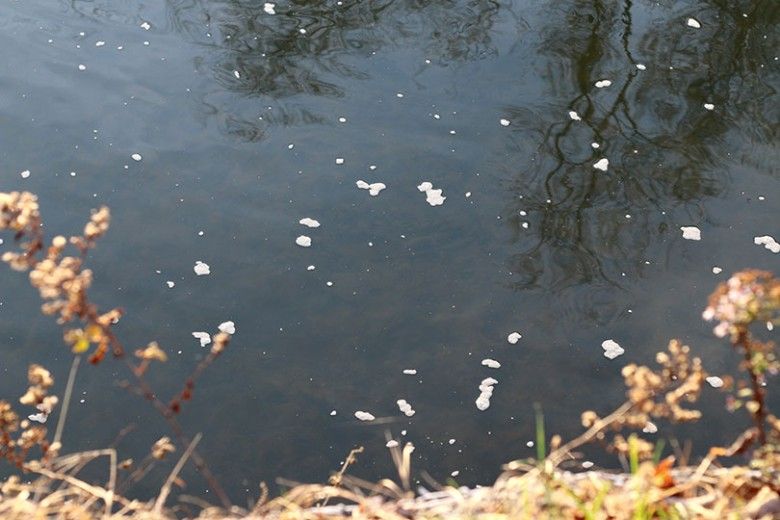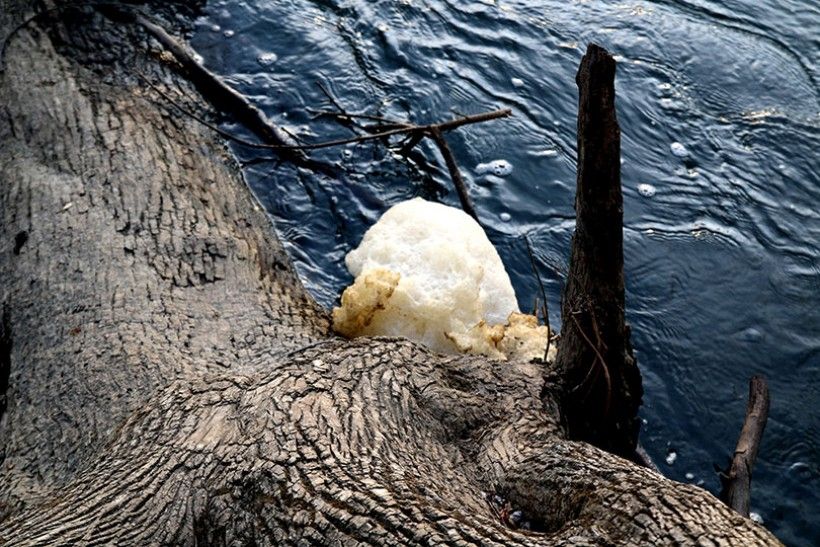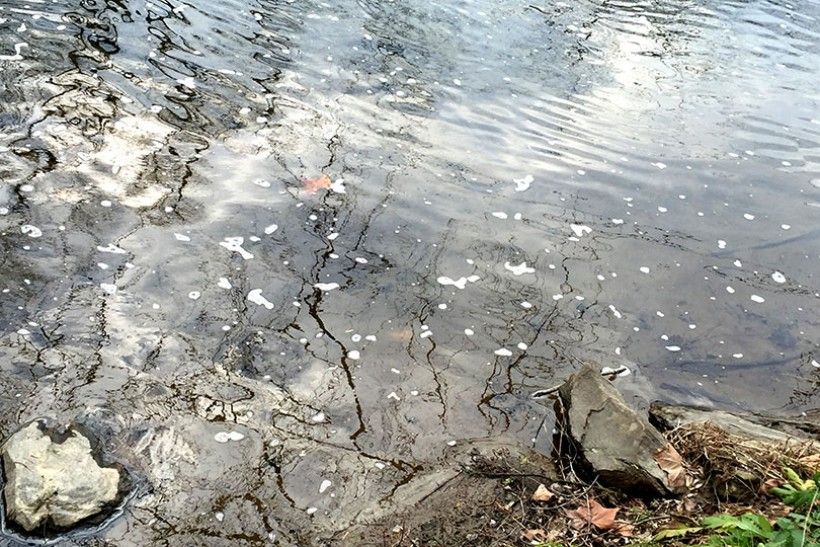Tiny Bubbles…In the Brandywine?

As one of the groups leading the charge on maintaining clean water in the Brandywine Valley, the staff of the Brandywine Conservancy often get questions about how each person can do their part. One of the questions we get pretty regularly is regarding bubbles in local waterways, and what they mean.


How to Tell the Difference Between Natural and Man-Made Foam
Natural sources from decomposition of leaves, twigs or other organic substances:
- Natural foam appears as light tan or brown, but may be white and has an “earthy,” “fishy” or “fresh cut grass” odor.
- Natural foam occurs at many locations along a stream, accumulating on or near the bank, or on other material in the stream.
- Natural foam can be seen in eddies or floating downstream.
- Natural foam increases after rain storms as rainfall transports the decomposed plants to the stream.
- Natural foam can cover large areas and can accumulate in large amounts.
Man-made sources include yard fertilizing, car washing, washing machine discharge, sanitary sewer or septic field failures:
- Foam from man-made sources is usually white and fragrant or perfumed.
- Foam from man-made sources will accumulate near the source of the discharge.
- Foam from most detergents is biodegradable and will disappear quickly.
- Foam from leaking sanitary sewer lines or septic fields will have a foul odor.
- Foam from man-made sources is likely not related to rain storms.
If you see foam, suds or bubbles in your local stream that you suspect is a result of a man-made source, call your local municipality or county to report your complaint and request a water quality test.